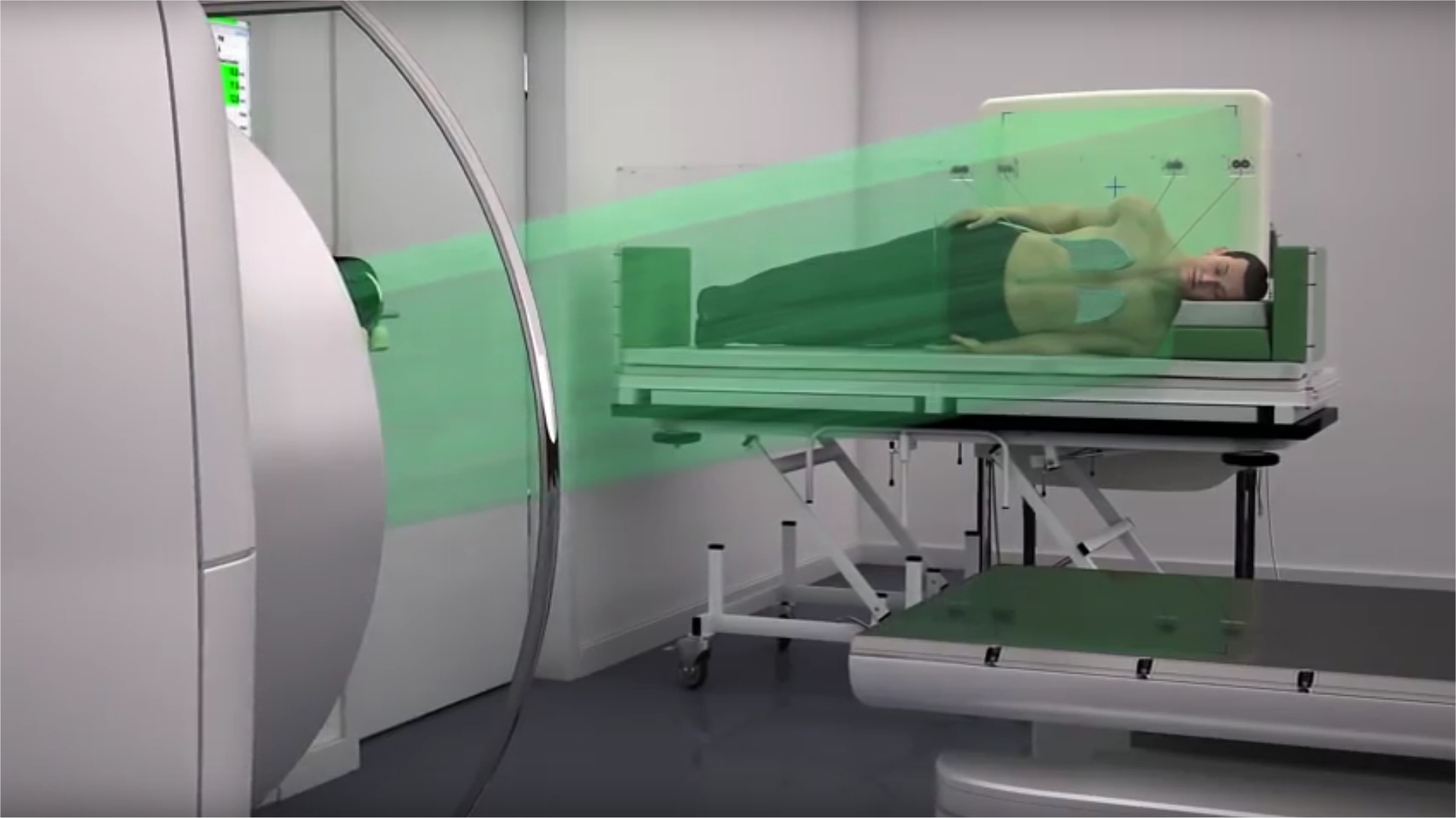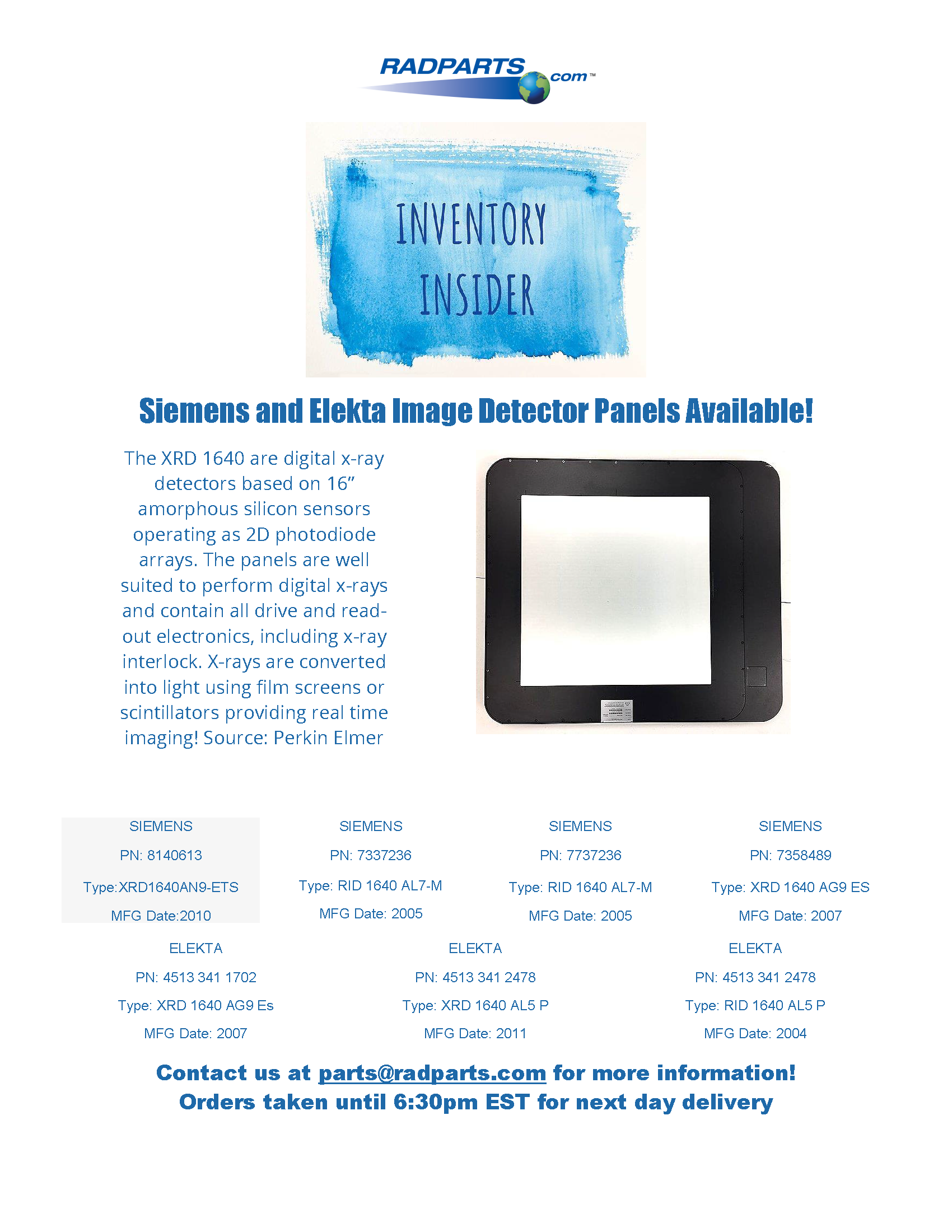
Category: Radparts
2019 Astro Annual Meeting

Inventory Insider – July 2019

Join us at the 61st AAPM Annual Meeting
Join us at the 61st AAPM Annual Meeting
July 14-17,2019
Henry B. Gonzalez Convention Center
Radparts.com, along with our sister company, Acceletronics, is exhibiting
at the 61st Annual Meeting of the American Association of Physicists in Medicine in San Antonio, TX.
Stop by the booth and check out the new TheraView Total Body Imager

Specials for July 2019

Choosing Radparts For Your Linac Needs
Why We Are Better Than the Rest
- Short-Terms Solutions – Sometimes facilities need a little more time to prepare for the installation and delivery of their new or refurbished linear accelerator. When our clients find themselves in need of a temporary solution to ensure their patients needs are met, we have them covered. Our sister company, Acceletronics, has pre-owned equipment that can be purchased to buy some time. These systems can then be utilized as a back up at a later date or resold. This is often a more affordable solution than renting a mobile unit.
- Financing – New facilities and healthcare centers do not often have a lot of capital to buy and operate new medical equipment. We offer financing options as well as less expensive refurbished equipment that can be used to provide quality care to patients until facilities are more established.
- Contracts for Service – We offer a number of contracts for servicing equipment. The major benefit is the team effort between Acceletronics and Radparts which ensures the parts that are needed to service your equipment are available and ready when needed. Here at Radparts we specialize in parts for repairing all linear accelerators and radiation equipment. We are the world’s largest independent distributor of OEM replacement parts for LINAC. With over 65,000 parts in stock and 3,200 individual line items – we are almost guaranteed to have what is needed to service or repair your equipment in a timely fashion.
Just A Few More Days For These Specials!

Inventory Insider May 2019
Is It A Good Idea to Purchase A Pre-Owned Linear Accelerator?
- When your facility is treating less than 8 to 10 patients a day, the revenue you are producing will not sustain the expense of a new machine.
- Areas where reimbursement is low, and your clinic needs to be profitable to continue providing treatment may be better suited to purchase a used or refurbished unit.
- The machine will be used in a limited capacity and doesn’t necessarily benefit from the latest technologies. These circumstances may include using the machine for research, treating animals, or non-medical, industrial purposes.
- Your facility will be able to afford the latest and greatest in the next couple of years but just can’t without first building a profitable practice.
- You are opening a new medical center and don’t have the resources to secure financing on a new machine.
- You are moving to a new location, can’t afford downtime, and need to be able to treat patients during the process and currently only have one machine.
- If your facility needs a back up to prevent downtime in patient care during maintenance and repairs on your main LINAC.
- A new facility is being built but you need a temporary way to treat patients.
- When the hardware aspect of treatment is not as important as the software. Used and refurbished equipment can have updated software installed when your budget doesn’t allow for both upgraded software and hardware.
A Little Preparation Goes A Long Way In Maintaining Linear Accelerators
Linear accelerators, LINAC, are large scaled medical devices that deliver external radiation in the form of a beam to cancerous tumors in order to shrink them. As with most medical equipment, LINAC systems are expensive which is a barrier that many facilities face when purchasing a new or refurbished unit.
With the expense of these large scaled systems it is important to make sure they are properly maintained and that you have access to linear accelerator parts for repair as needed. Medical facilities can contract with companies that specialize in maintenance and repair services of LINAC systems such as Acceletronics or have on staff a team of professionals whose job it is to provide these services for their equipment. There are advantages and disadvantage to both options, facilities choose based on their budget and facility needs.
Linear accelerators have evolved over the years. LINAC machines no longer only provide external radiation beams for treatment. Major advancement in this technology include onboard imaging systems and portal dosimetry. Such complex systems require biomedical and clinical engineers to not only understand what these machines do but also how they are operated. Even with advanced training, until the engineer has hands on experience it is difficult to truly understand how the machine functions.
Not only is the linear accelerator expensive but the expertise to use and understand the machine is costly as well. This again is an issue that faces many medical facilities. These two factors alone make up the most significant aspect of expense faced by facilities when deciding on the purchase of equipment.
All linear accelerators are not created equally and therefore when replacing an existing system there will be a significant cost to not only bring new equipment in but also the training on the individual piece of equipment. One way to combat this is to replace existing LINAC with identical refurbished linear accelerators.
We have discussed a lot about the expense of these units however there is also significant revenue to be gained by having external radiation treatment available to patients seeking treatment for cancerous tumors. It is important for facilities to make sure these machines are functioning at peak capabilities at all times. Downtime not only impacts revenue but also patient care. In order for patients to have effective treatment for their tumors it is important they are able to strictly follow the treatment schedule laid out by their radiation team. If equipment is down this is not possible.
To ensure that patient care and revenue is not affected by machine downtime it is crucial to maintain equipment. Machine maintenance includes repairs in anticipation of failure. If a parts failure is eminent based on previous experience it behooves the facility to purchase the LINAC replacement part ahead of time so that service can be provided around patient’s treatment schedules. This allows facilities to schedule downtime to prevent unplanned downtime.
Radparts is the world’s largest independent distributor of OEM replacement parts for Linear Accelerators and Radiation Oncology equipment. Radparts provides high quality, user friendly, low cost parts support for linear accelerators and radiation equipment. More information can be found at https://www.radparts.com/.
